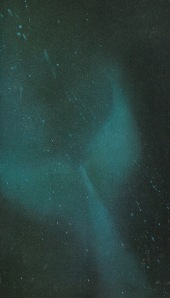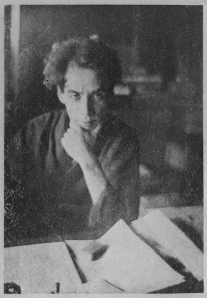Is there something—a feeling, a word, an action—that can effectively summarize the American character as we see it? Probably not, but in exploring the possibility that a culture, and specifically one as ubiquitous as the 21st century American has become, could be condensed into one word, I stumbled across a possible solution. Nathaniel Hawthorne, that gatekeeper of our shadowy past clear back to the first days, in perhaps his most famous work, The Scarlet Letter, touches on an intrinsic characteristic within our national mind and spirit—the prevalence of American gloom. Hawthorne writes of our stern forbears:
But we perhaps exaggerate the gray and sable tinge, which undoubtedly characterized the mood and manners of the age. The persons now in the market-place of Boston had not been born to an inheritance of Puritanic gloom. They were native Englishmen, whose fathers had lived in the sunny richness of the Elizabethan epoch; a time when the life of England, viewed as one great mass, would appear to have been as stately, magnificent, and joyous, as the world has ever witnessed. Had they followed their hereditary taste, the New England settlers would have illustrated all events of public importance by bonfires, banquets, pageantries, and processions. (202)
Here, in the incubational stage of the American people, as we shifted from an English identity to something new and untested, perhaps lies that jumping off place towards American mock seriousness, melancholy, and general malaise. Hawthorne calls it “Puritanic gloom,” and from this we can see how this gloom is broadcast forward in time to become an embodying quality within the fabric of our national identity. The English cheerfulness and merriment has been erased. The only relic which has been inherited is the overwhelming feeling of gloom.Hawthorne further describes the situation of the native-born American:
Their immediate posterity, the generation next to the early emigrants, wore the blackest shade of Puritanism, and so darkened the national visage with it, that all the subsequent years have not sufficed to clear it up. We have yet to learn the forgotten art of gayety. (204)
The scene which Hawthorne describes on that festival day in the early years of Boston has faded into the realm of myth. While there was never truly the joyous release that might be present in England, Hawthorne intimates to us that the memory of that release was present. As soon as that memory died off, the nation, with its witchery and dark forests, was left only with the “blackest shade” of their English parents, and each generation, down through Hawthorne’s day, and into our own, has worn no single thread of that original memory of joy. We are a people who stand beneath a shadow, whether consciously or not. Every movement to step outside of this national shadow has been thwarted just as Endicott thwarts the gayety of Merry Mount in Hawthorne’s prescient “The May-Pole of Merry Mount.” The earth of our continent is drenched in the black blood of the many peoples who have been thrown down in front of Endicott’s puritanical sword. The characters have shifted, the language has changed, but the same gloom surrounds us all. We are not a people comfortable with belly-laughter. The only laughter we truly understand is the high-pitched cackle of the piously mad. It is our national heritage.
It was with these thoughts swirling around that one word—gloom—that I returned from Hawthorne’s work to reassess my initial question. If gloom truly is the word that best describes us, and I think that there is more than a shred of truth to this, then what does this say about our society today, our world view and politics, our interactions with one another and with ourselves? Have we come forward in time, away from this historical and social millstone that Hawthorne describes in such clear detail? Is there hope that we will one day relearn the zest and freedom that colored the memories of the earliest English settlers on this continent, or has it been forever lost through four hundred years of vigorous bloodshed? Within the subsequent installments of this series of essays we will attempt to probe the literary, social, and political world surrounding this idea of American gloom. We may not speak directly to the issue, but we will endeavor to look at each subject through the lens of the melancholy, the vision of an eternal twilight on this continent. Be it in the form of an assessment of our fiction, that of our neighbors to the north and south, or historical influences on our current state of affairs, the goal here is to generate discussion. This begins with an attempt to admit, on all levels, that Hawthorne’s assessment of our culture is greatly accurate. In so doing we hope to not escape what seems inescapable in our collective existence, but to thrust our minds and our hearts directly into the shade of this gloomiest of subjects and to touch a piece or two of lost joy. Hopefully you will enjoy walking these dark paths with us.
NOTE: Both quotes in this introductory section are from Hawthorne’s The Scarlet Letter (Chapter: “The New England Holiday”). My pagination refers to the Library of America edition of the book.



